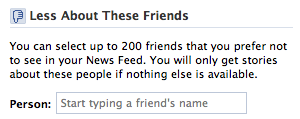Digital Learning: Sharing is Caring?
Comments: 3 - Date: December 18th, 2008 - Categories: Learning
I recently found out about the snazzily named RipMixLearners, a student-run Open Courseware Project out of the University of the Western Cape in South Africa. Unlike MIT’s OCW, the project is run from ground-up, with the initiative coming from the students rather than the institution. It’s really quite amazing what the students have been able to do and the impact that they’ve had. Aqeelah, one of the contributors to the site, gave some examples on the Sharing Nicely blog:
Students from Zimbabwe had been asking her for materials on Natural Medicine, and complained that they couldn’t find anything online. She pointed them to the resources that her fellow students had compiled, and which she had been using for a few weeks…
When the lecturer spilt coffee over his computer and lost all of his data, the students provide him with a backup of his lecture notes, which they had stored online. I can just imagine how the students loved it.
Finally, the site became so popular with other students in the class, that they started demanding immediate upload of the notes. Complaints rolled in if the materials had not been uploaded within hours after the lecture.
It’s very interesting to hear about these projects around the world Because there is more institutional and infrastructural support for this kind of project in the United States (whether open or not, lecture videos and notes are usually made available online at most universities), student initiatives have been more focused on sharing student work – notes, solutions, and even old exams. There’s a preponderance of online note-sharing sites: Course Hero, Knetwit, PostYourTest, Koofers to just name a few. This kind of sharing isn’t really what different than borrowing a friend’s notes or the passing along old exams, but the Internet allows it to exist on a much larger scale.
If that description causes a moment of pause, it’s because there are two issues are play: copyright violation and academic integrity. (Full disclosure: I blogged about a couple of my classes on a website called FinalsClub.org, which is currently undergoing changes to become more of a collaborative note-taking site.) A Harvard Crimson article on FinalsClub.org cites both Harvard’s general counsel’s copyright argument, “Under the federal Copyright Act of 1976, a lecture is automatically copyrighted as long as the professor prepared some tangible expression of the content—notes, an outline, a script, a video or audio recording.” and issues of academic integrity from the Student Handbook, “Students who sell lecture or reading notes, papers, translations, or who are employed by a tutoring school or term paper company, are [liable for disciplinary action] and may be required to withdraw.” What’s potentially problematic about Course Hero, Knetwit, and PostYourTest are that they incentivize the upload of material through some sort of point system, sometimes redeemable for cash and sometimes for more access to the website’s resources.
Sharing knowledge, the warm, fuzzy ideal that underlies the open course ware, is easy to support but there are thornier issues when sharing solution keys and old exams. The intellectual property argument certainly doesn’t support this sharing and could there also be a detriment to learning as a whole?
I wonder if the availability of solution keys feed a kind of “get the answers and the answers only” kind of mentality – an unhealthy focus on the solution rather than the process. As a science major, most of my homework is weekly problem sets, which always include a few long and involved problems in the mix. The thing with these hard problems is that there are a finite number of them because as hard as they are to solve, they are also hard to write. Canny students can usually find the solutions online, whether in freely available old exams/problem set solutions or more involved digging through archived course sites and the world wide web.
Say I find the instructor’s solution manual to my math textbook online – is it okay for me to use it? To copy my homework? To check my homework? If it’s freely available online, am I really taking advantage of an unfair edge? But there’s also, arguably, the karmic payback, when it comes to an exam and one hasn’t really learned the material.
The explosion of sharing that comes with the Internet creates new tools for Digital Natives. How these tools will be utilized and how they will change the education landscape remains to be seen.







